The 3D Printing Dictionary
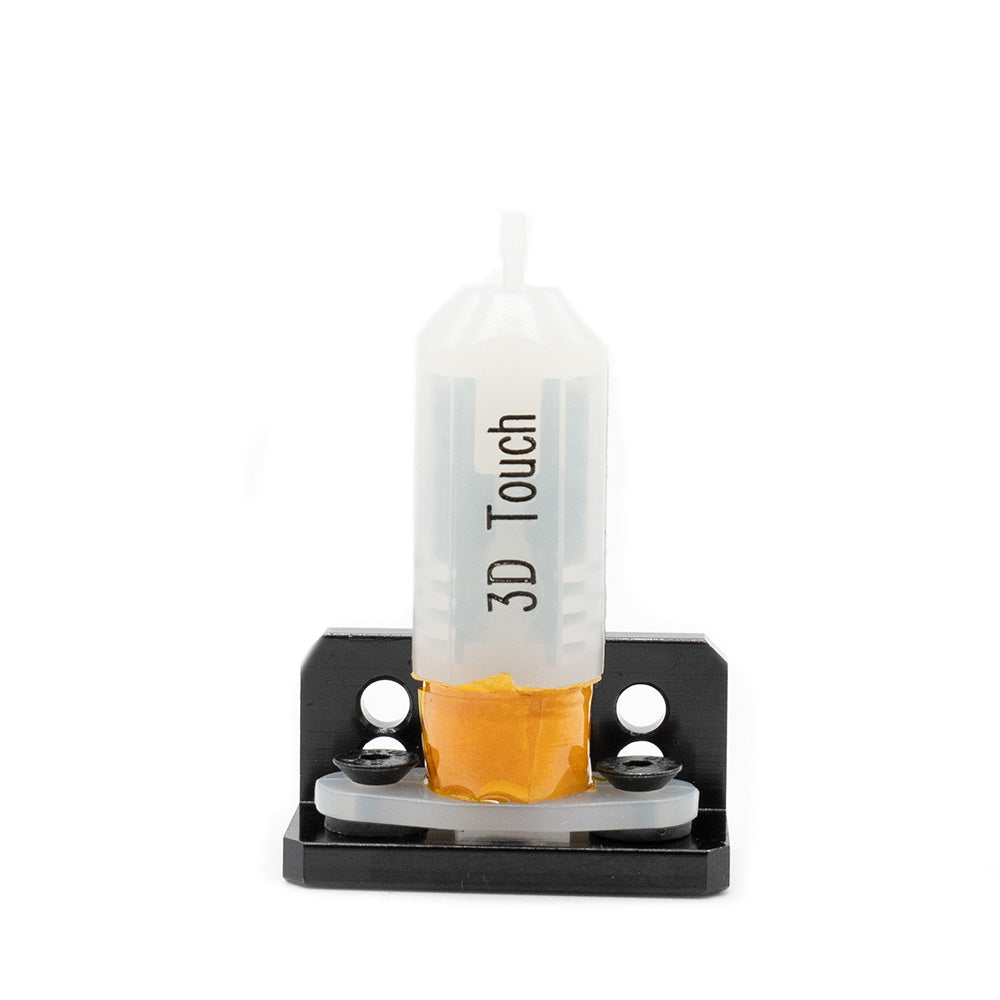 Un 3D Touch is a pressure sensor used in some 3D printer models (the tool that deposits the printing filament) during the printing process. It allows the printer to adjust the pressure applied to the filament based on the pressure exerted on the Touch's tip, which can improve print quality and layer precision.
Un 3D Touch is a pressure sensor used in some 3D printer models (the tool that deposits the printing filament) during the printing process. It allows the printer to adjust the pressure applied to the filament based on the pressure exerted on the Touch's tip, which can improve print quality and layer precision.
3D Touch is typically used for the auto-calibration of a 3D printer, which involves adjusting the printer's settings to ensure that the extruder is at the correct distance from the print bed. By precisely adjusting this distance, the printer can ensure that the filament is deposited evenly and flawlessly on the bed, resulting in high-quality prints.
It can work with all types of bed materials, such as ultrabases, PEI, buildtak, etc. Once the various points on the surface are analyzed, the printer will be able to micro-manage the differences in surface level to achieve a better first layer of printing.
The "Bowden" system refers to the filament drive mechanism being positioned away from the print nozzle. A PTFE tube is used between the extruder and the nozzle in this setup.
The main advantages:
- Reduction in the weight of the print head, as the motor has significant weight, which improves print quality by generating less vibration.
- Lower manufacturing cost, resulting in more affordable printers.
The disadvantages are::
- It will be more challenging to print flexible filament due to the distance from the nozzle. The flexible filament may tend to flatten. Currently, many flexible filaments still allow for decent printing.
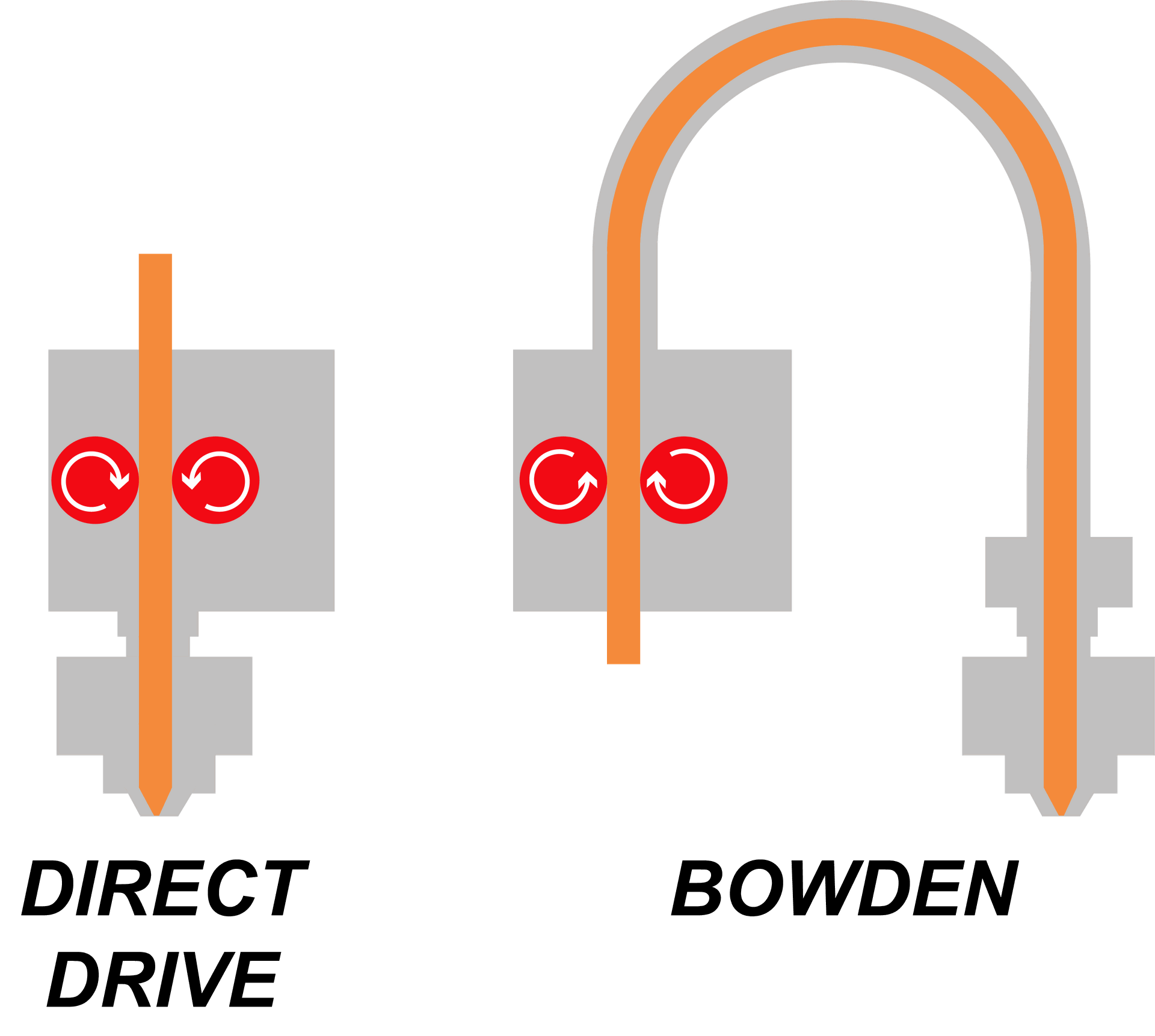
 An impression ventilation channel is a component of the 3D printer that allows for the cooling of the print head and filament during the printing process. This enables faster cooling of the printed material for improved print quality. The impression ventilation channel is typically composed of a pipe or tube placed near the print head, which draws in fresh air to cool these parts of the printer.
An impression ventilation channel is a component of the 3D printer that allows for the cooling of the print head and filament during the printing process. This enables faster cooling of the printed material for improved print quality. The impression ventilation channel is typically composed of a pipe or tube placed near the print head, which draws in fresh air to cool these parts of the printer.
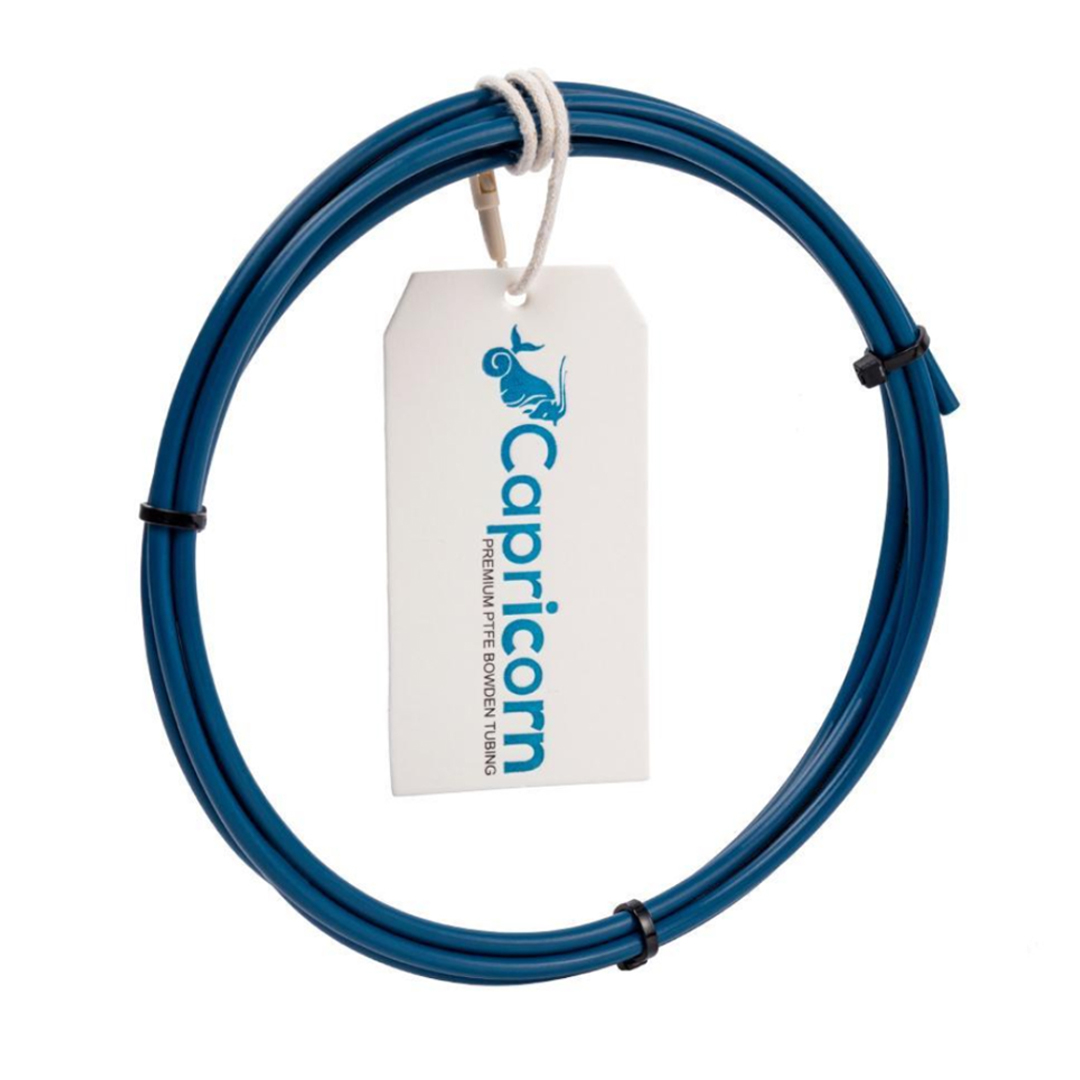 Capricorn is a type of PTFE (see datasheet below), typically in blue color.
Capricorn is a type of PTFE (see datasheet below), typically in blue color.
It is commonly used as a feed tube for the 3D printer filament. PTFE is a highly resilient, waterproof, and self-lubricating material, making it ideal for use in 3D printers. The Capricorn tube is made with a special blend of PTFE and other materials to further enhance its strength and durability.
The Capricorn PTFE tube is typically used to connect the extruders of the 3D printer to the print nozzles. It can also be used in other applications where a high-temperature-resistant and chemically stable tube is required, such as in the chemical industry or laboratories.
In general, the Capricorn PTFE tube is an important component of a 3D printer's equipment, as it ensures the quality and precision of the print by ensuring proper filament transfer to the print nozzle.
The Capricorn PTFE should not exceed a temperature of 260°C.
 A motherboard is an essential component of any 3D printer. It is a printed circuit board to which all the elements of the printer, such as motors, sensors, screens, and control buttons, are connected. The motherboard is also connected to a microprocessor that runs the printer's software and controls all the printer's components. In general, the motherboard is the brain of the 3D printer and coordinates the operation of all the printer's elements to produce high-quality 3D objects.
A motherboard is an essential component of any 3D printer. It is a printed circuit board to which all the elements of the printer, such as motors, sensors, screens, and control buttons, are connected. The motherboard is also connected to a microprocessor that runs the printer's software and controls all the printer's components. In general, the motherboard is the brain of the 3D printer and coordinates the operation of all the printer's elements to produce high-quality 3D objects.
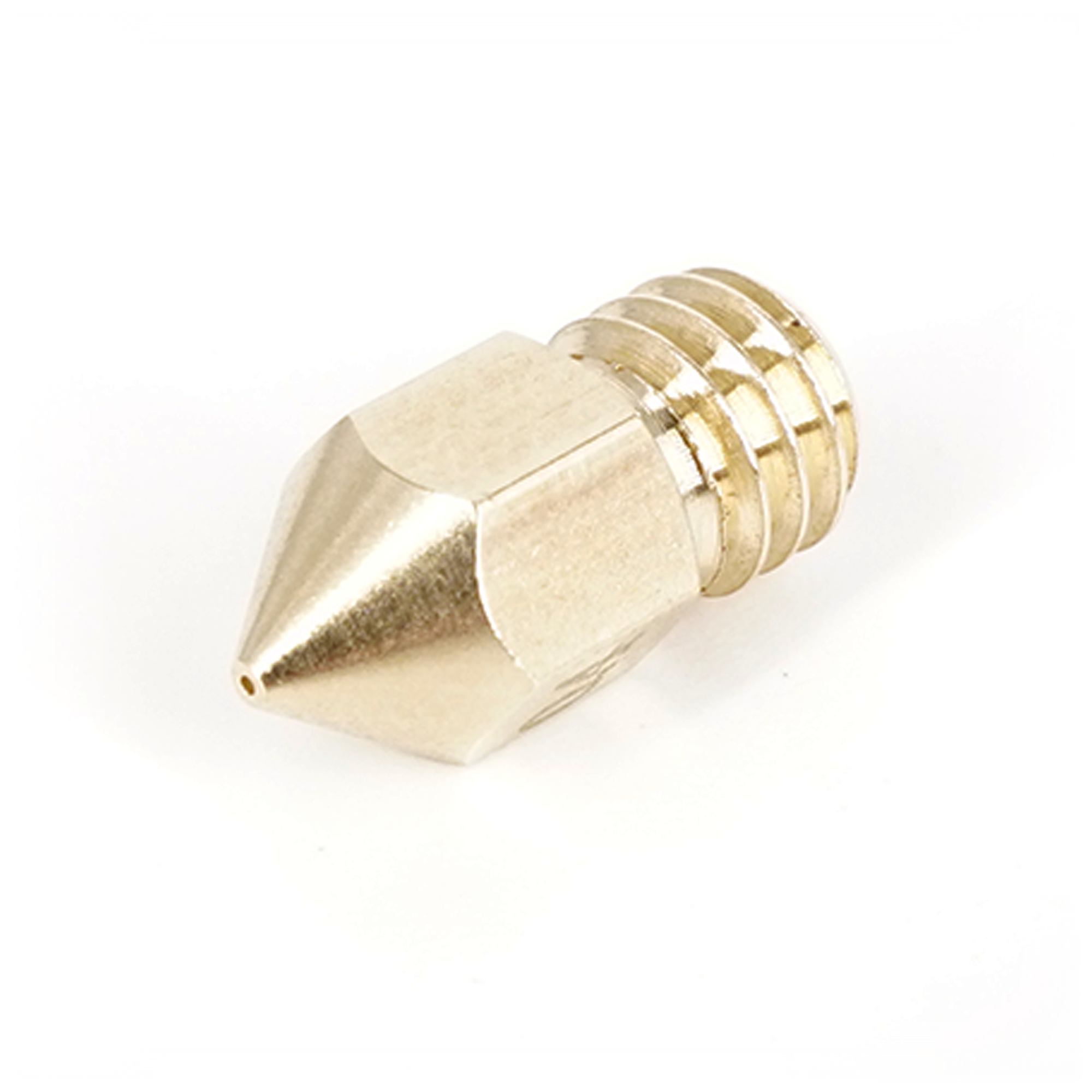 A nozzle, commonly referred to as a 'nozzle' in English, is the piece that is screwed onto the end of the heating block. Different nozzle diameters are available, which can increase both the quality and speed of printing for larger nozzles. For example, a 0.2mm nozzle will provide better quality but longer print times. A 0.8mm nozzle will reduce print times but may result in slightly lower print quality.
A nozzle, commonly referred to as a 'nozzle' in English, is the piece that is screwed onto the end of the heating block. Different nozzle diameters are available, which can increase both the quality and speed of printing for larger nozzles. For example, a 0.2mm nozzle will provide better quality but longer print times. A 0.8mm nozzle will reduce print times but may result in slightly lower print quality.
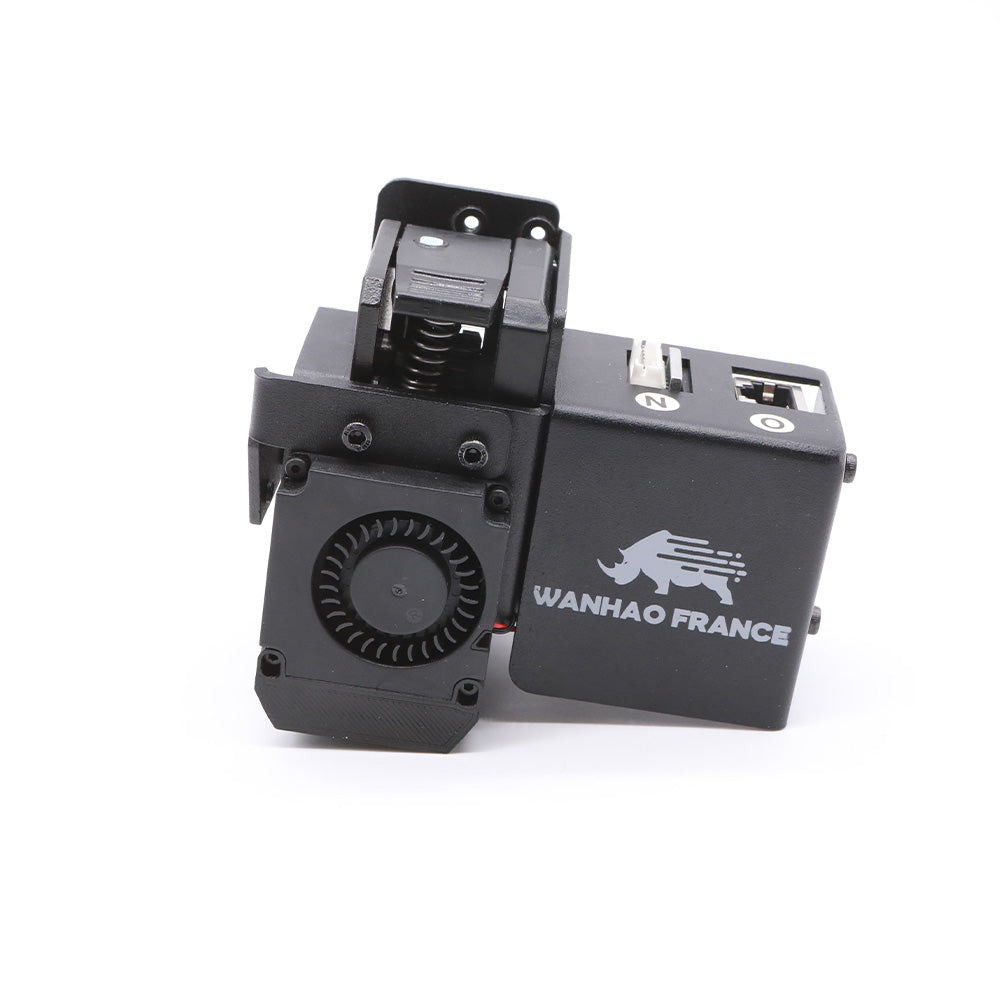 The 'Direct Drive' system refers to the filament drive mechanism located just above the print nozzle.
The 'Direct Drive' system refers to the filament drive mechanism located just above the print nozzle.
The main advantages:
- Easier printing because the filament is extruded directly by the nozzle.
- The printer can provide a more controlled filament flow.
- Less risk of creating stringing during printing.
The disadvantages are::
- The system will have more weight than in the case of 'Bowden,' so it will be more prone to vibrations, which can reduce print quality.
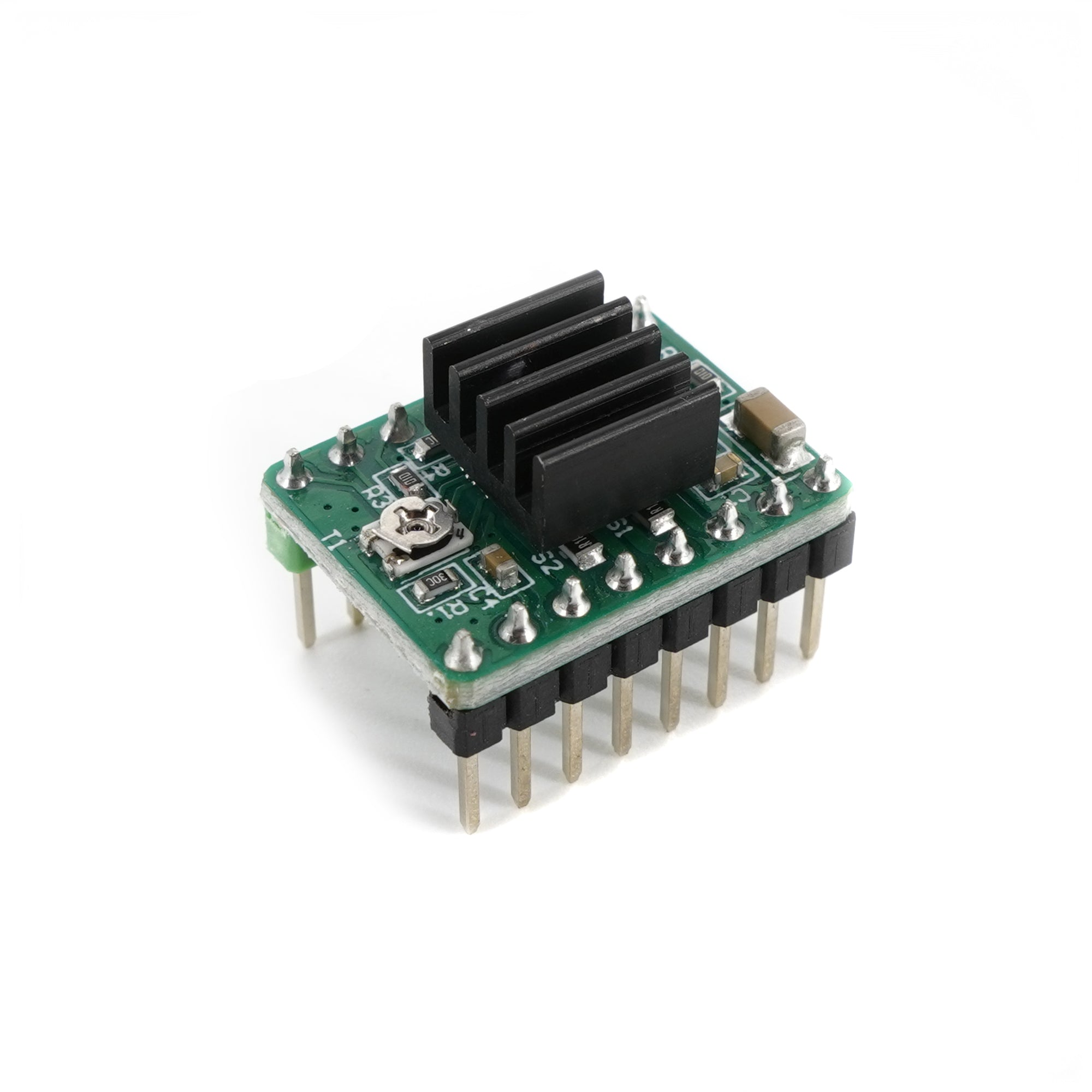 The A4988 driver is an electronic component used to control a stepper motor in a 3D printer. It controls the speed and direction of rotation of the motor by sending electrical pulses to its windings. The A4988 driver is typically connected to a control board, which sends the necessary pulses to move the stepper motor's rotor one step at a time. By configuring the microstep inputs of the A4988 driver, you can adjust the number of microsteps per step, allowing for fine control over the motor's speed and precision. The A4988 driver is a crucial component in a 3D printer as it enables the movement of the print heads and the print bed to create the layers of the 3D object.
The A4988 driver is an electronic component used to control a stepper motor in a 3D printer. It controls the speed and direction of rotation of the motor by sending electrical pulses to its windings. The A4988 driver is typically connected to a control board, which sends the necessary pulses to move the stepper motor's rotor one step at a time. By configuring the microstep inputs of the A4988 driver, you can adjust the number of microsteps per step, allowing for fine control over the motor's speed and precision. The A4988 driver is a crucial component in a 3D printer as it enables the movement of the print heads and the print bed to create the layers of the 3D object.

A TMC driver (TMC stands for 'Trinamic Motion Control') is an electronic component that allows a 3D printer to control and manage the stepper motors that drive the printer's motion axes. These motors are typically used to move the printer's print head and print beds in space. The TMC driver handles speed and position management of the motors, as well as regulating the temperature and power supply to the motors. It also plays a crucial role in error detection and motion issue management. By using a TMC driver, users can achieve improved precision and print quality, as well as greater reliability and longer lifespan for their 3D printer.
 A Titan extruder is a part of a 3D printer used to push filament (the raw material used for 3D printing) through the printer's nozzle using a motor.
A Titan extruder is a part of a 3D printer used to push filament (the raw material used for 3D printing) through the printer's nozzle using a motor.
Titan extruders are commonly used in high-performance 3D printers because they are more durable and efficient than plastic or aluminum extruders.
A Bondtech Mini Geared (BMG) extruder is a type of extruder used in some 3D printers to feed filament into the print head. A BMG extruder typically consists of a set of geared wheels that are used to push the filament into the print head. The geared wheels are driven by an electric motor and are designed to exert strong pressure on the filament to reliably and precisely feed it to the print head. In general, BMG extruders are used to improve the accuracy and reliability of filament feeding into the print head and to produce high-quality 3D objects.
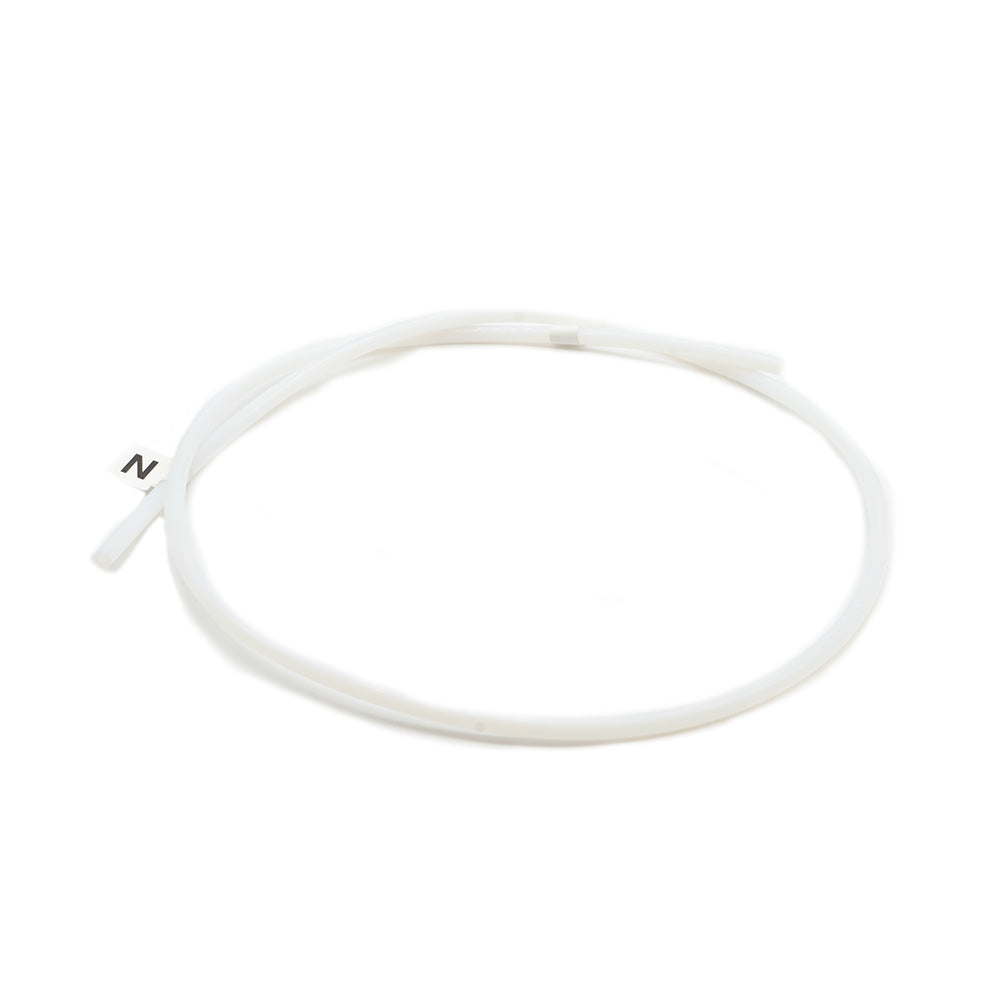 PTFE (polytetrafluoroethylene) tubing is a type of plastic tube used in 3D printers. It is typically used as a feed tube for the 3D printer's filament. PTFE is a highly resistant, waterproof, and self-lubricating material, making it ideal for use in 3D printers.
PTFE (polytetrafluoroethylene) tubing is a type of plastic tube used in 3D printers. It is typically used as a feed tube for the 3D printer's filament. PTFE is a highly resistant, waterproof, and self-lubricating material, making it ideal for use in 3D printers.
PTFE tubing is typically used to connect the 3D printer's extruders to the print nozzles. It can also be used in other applications where a tube that is resistant to high temperatures and chemically stable is required, such as in the chemical industry or laboratories.
In general, PTFE tubing is an important component of a 3D printer's equipment, as it ensures the quality and precision of printing by facilitating a proper transfer of filament to the print nozzle.
Basic PTFE should not exceed a temperature of 230°C.
 An print surface is the surface on which the 3D printer deposits the printing filament during the printing process. It can be made of metal, glass, plastic, or PEI, and it needs to be flat and clean to ensure proper filament adhesion and optimal print quality.
An print surface is the surface on which the 3D printer deposits the printing filament during the printing process. It can be made of metal, glass, plastic, or PEI, and it needs to be flat and clean to ensure proper filament adhesion and optimal print quality.
The print surface is typically located on the bed of the 3D printer, which is the platform that supports the object being printed. The bed can be heated to facilitate filament adhesion to the print surface, especially when using plastic-based filaments like PLA or ABS.
It's important to properly prepare the print surface before starting the print. This can include cleaning the surface with a dry cloth or using special adhesives (such as painter's tape or bed adhesion paste) to improve filament adhesion. By ensuring that the print surface is clean and well-prepared, you can ensure better print quality and reduce the risk of defects or failures.
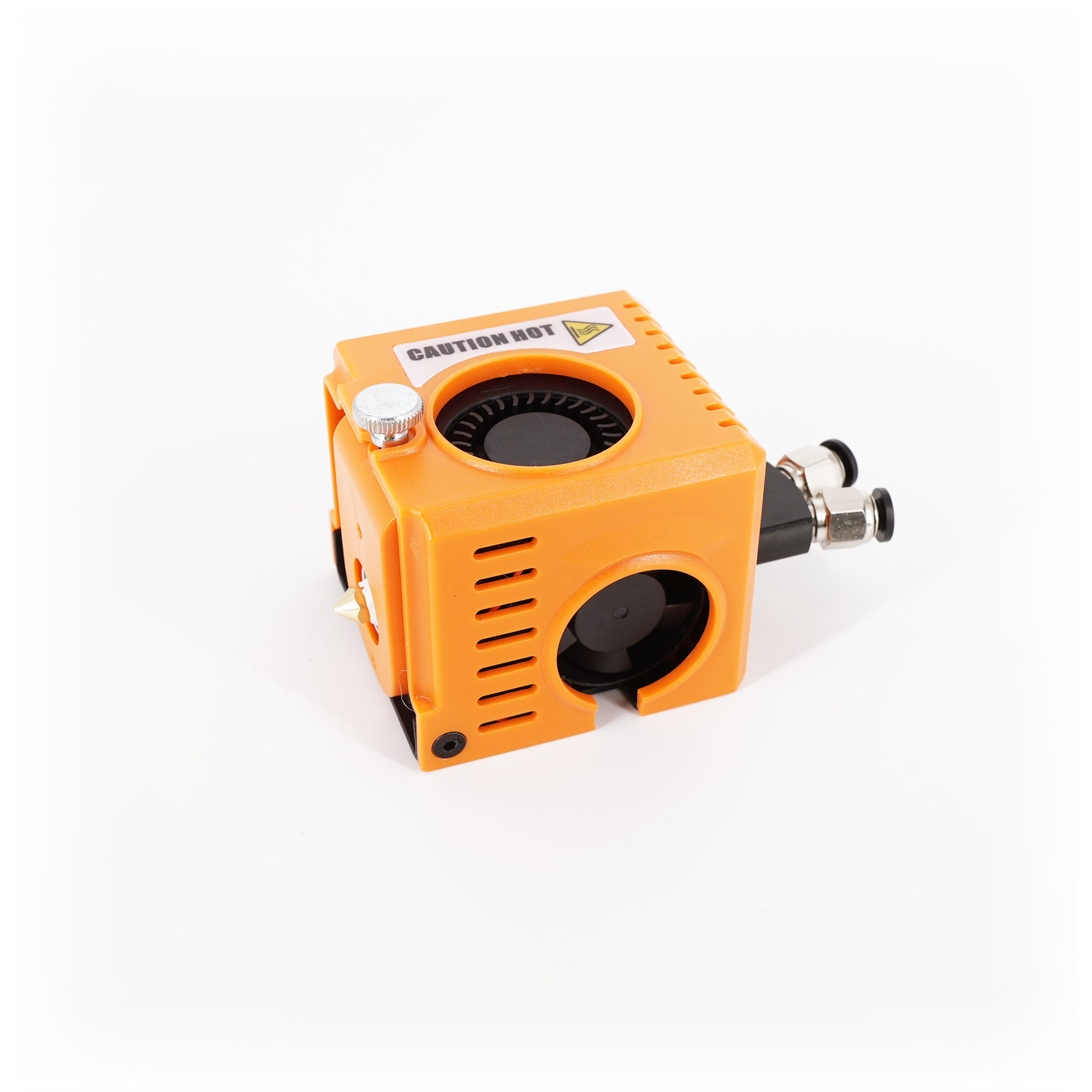 A "print head" is the part of a 3D printer that contains the extruder and is responsible for depositing the printing material onto the printing platform. The extruder is the mechanism that heats and extrudes the printing material, typically in the form of plastic filament, through a very fine nozzle to create the layers of the printed object. The print head can be moved in different directions and at different heights to allow the 3D printer to create precise shapes and details. The print head can also be equipped with different types of nozzles and extruders to print with different materials and achieve different surface finishes and qualities.
A "print head" is the part of a 3D printer that contains the extruder and is responsible for depositing the printing material onto the printing platform. The extruder is the mechanism that heats and extrudes the printing material, typically in the form of plastic filament, through a very fine nozzle to create the layers of the printed object. The print head can be moved in different directions and at different heights to allow the 3D printer to create precise shapes and details. The print head can also be equipped with different types of nozzles and extruders to print with different materials and achieve different surface finishes and qualities.
 PEI (polyetherimide) is a material used as a build surface for 3D printers. It is typically used as the surface of the print bed, which is the surface on which the printed object is created. PEI surface is valued for its ease of use and its ability to adhere strongly to printed objects during the printing process, while also allowing for easy removal once the print is complete.
PEI (polyetherimide) is a material used as a build surface for 3D printers. It is typically used as the surface of the print bed, which is the surface on which the printed object is created. PEI surface is valued for its ease of use and its ability to adhere strongly to printed objects during the printing process, while also allowing for easy removal once the print is complete.
PEI is typically coated with another material, such as tempered glass or metal, to make it more durable and resistant to damage. Some 3D printers have integrated PEI surfaces, while others allow users to replace the build surface with a separate PEI surface if needed.
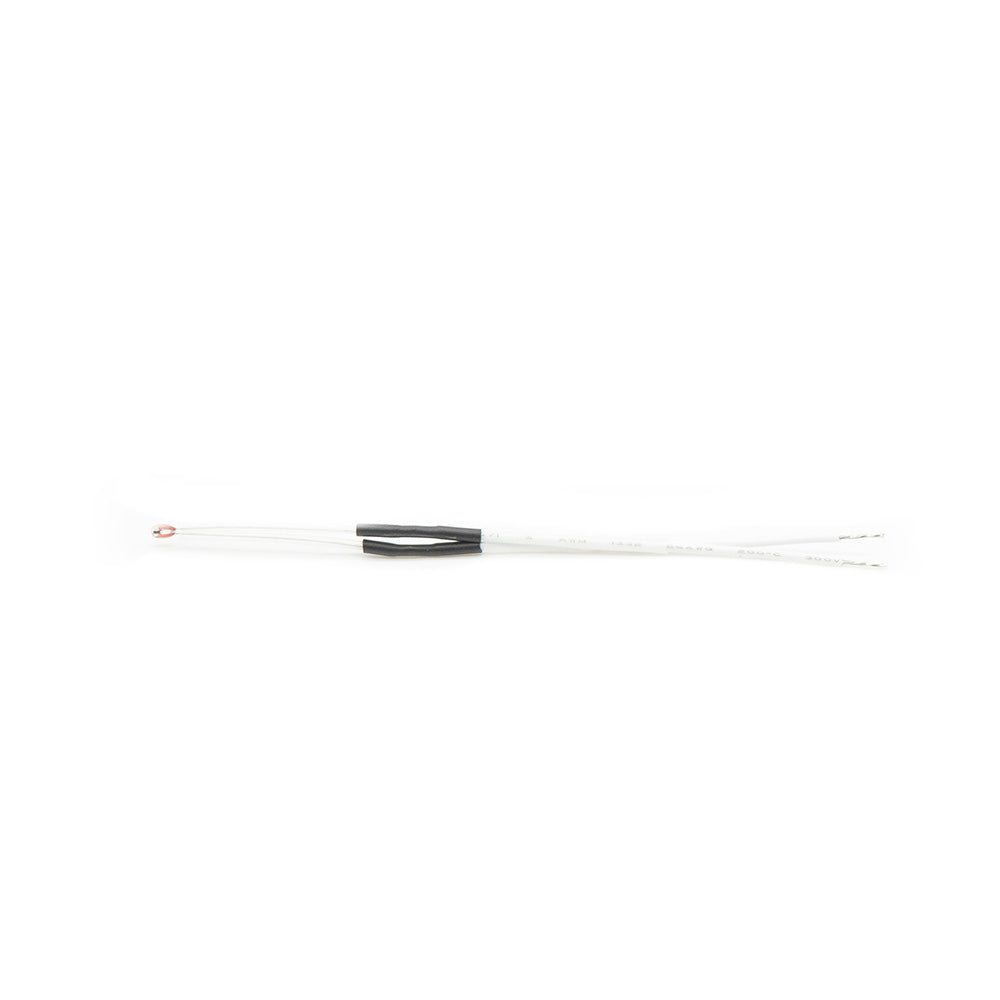 A thermistor is a temperature sensor used in a 3D printer to measure the temperature of the hotend (nozzle) and the filament during the printing process. The thermistor is typically placed near the hotend and is connected to a controller that uses the temperature data to adjust the hotend and filament temperatures in real-time. This helps maintain the temperature at an optimal level for the proper and smooth operation of the 3D printer.
A thermistor is a temperature sensor used in a 3D printer to measure the temperature of the hotend (nozzle) and the filament during the printing process. The thermistor is typically placed near the hotend and is connected to a controller that uses the temperature data to adjust the hotend and filament temperatures in real-time. This helps maintain the temperature at an optimal level for the proper and smooth operation of the 3D printer.
 A heating cartridge is a component of a 3D printer used to heat the print head and filament during the printing process. The heating cartridge typically consists of a metal filament wound around a ceramic or metal core. When the heating cartridge is supplied with electrical current, the metal filament heats up and transfers its heat to the print head and filament, melting the filament and extruding it to create the 3D object.
A heating cartridge is a component of a 3D printer used to heat the print head and filament during the printing process. The heating cartridge typically consists of a metal filament wound around a ceramic or metal core. When the heating cartridge is supplied with electrical current, the metal filament heats up and transfers its heat to the print head and filament, melting the filament and extruding it to create the 3D object.
 A pneufit is a connector used in some 3D printers to connect PTFE tubes to various components of the printer that require filament guidance to operate. Pneufits are typically used to connect PTFE tubes between the extruder and the print head.
A pneufit is a connector used in some 3D printers to connect PTFE tubes to various components of the printer that require filament guidance to operate. Pneufits are typically used to connect PTFE tubes between the extruder and the print head.
 A hotend is the set of components in a 3D printer responsible for melting and extruding the filament to create the 3D object. A hotend typically consists of a print head, a heating cartridge, a thermistor, a heatbreak, and a nozzle. The print head is responsible for melting the filament and directing it to the nozzle.
A hotend is the set of components in a 3D printer responsible for melting and extruding the filament to create the 3D object. A hotend typically consists of a print head, a heating cartridge, a thermistor, a heatbreak, and a nozzle. The print head is responsible for melting the filament and directing it to the nozzle.
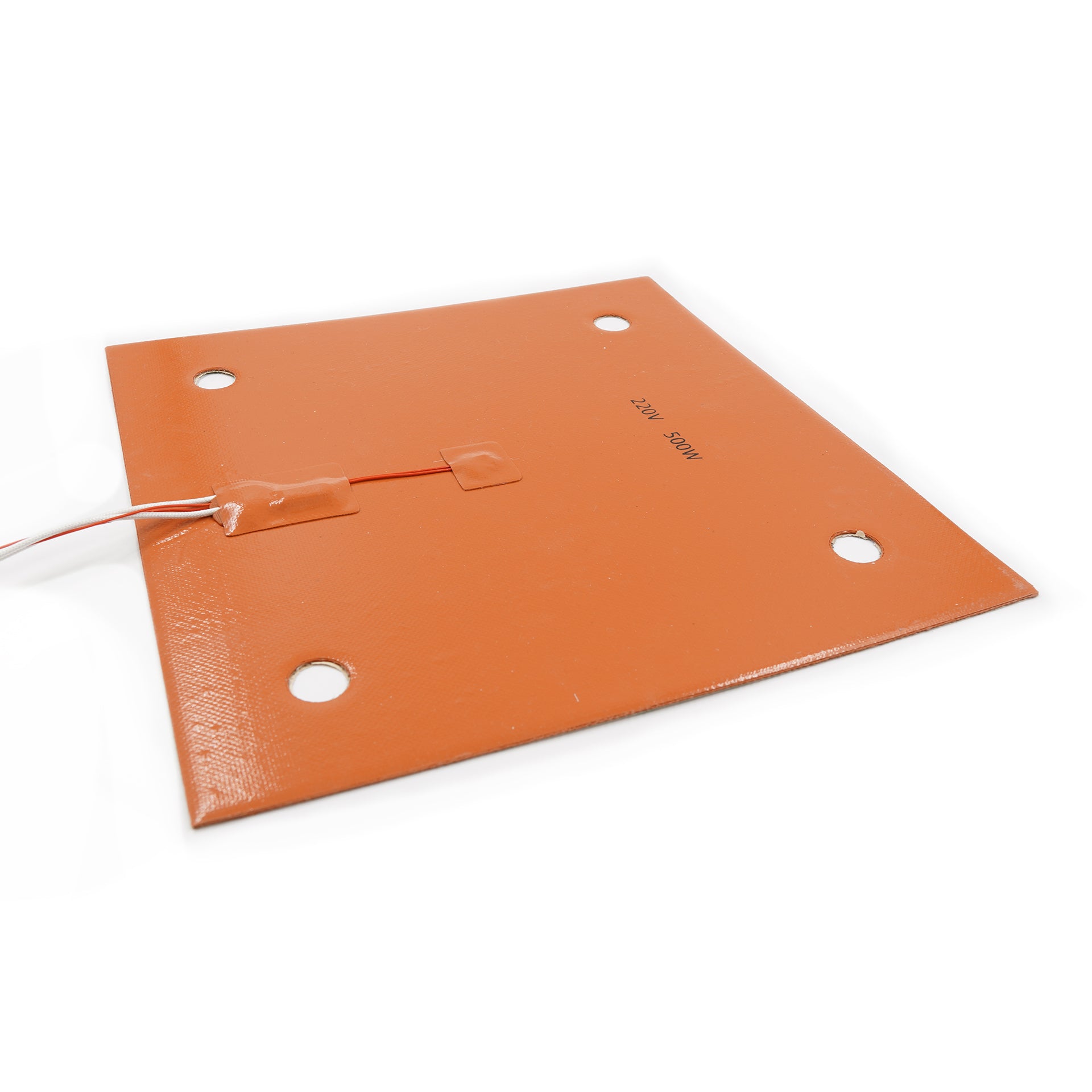 A heated bed is a surface designed to be heated to a high temperature. In the context of 3D printing, a heated bed is used in 3D printers to keep a print bed warm during the printing process. This can be useful for various reasons, including ensuring that the printing material adheres properly to the print bed and preventing the material from cooling too quickly during printing, which can lead to defects in the printed object. The temperature of the heated bed needs to be adjusted based on the printing material being used and the design of the printed object.
A heated bed is a surface designed to be heated to a high temperature. In the context of 3D printing, a heated bed is used in 3D printers to keep a print bed warm during the printing process. This can be useful for various reasons, including ensuring that the printing material adheres properly to the print bed and preventing the material from cooling too quickly during printing, which can lead to defects in the printed object. The temperature of the heated bed needs to be adjusted based on the printing material being used and the design of the printed object.
Un slicer est un logiciel utilisé pour préparer des modèles 3D pour l'impression en les "tranchant" en couches fines qui peuvent être imprimées par une imprimante 3D. Les slicers sont également connus sous le nom de "trancheurs" ou de "logiciels de tranchage".
Voici comment fonctionne un slicer : lorsque vous chargez un modèle 3D dans un slicer, celui-ci analyse le modèle et le "tranche" en couches fines qui peuvent être imprimées par une imprimante 3D. Le slicer génère également un fichier de code G-Code, qui est un langage de commande utilisé par les imprimantes 3D pour savoir quoi imprimer et comment le faire.
Les slicers offrent de nombreuses options de configuration qui vous permettent de personnaliser la manière dont votre modèle est tranché et imprimé. Par exemple, vous pouvez configurer la taille des couches, la vitesse d'impression, le type de matériau utilisé et bien plus encore.
Il existe de nombreux slicers différents disponibles sur le marché, chacun ayant ses propres caractéristiques et fonctionnalités uniques. Certains slicers sont gratuits, tandis que d'autres sont payants et offrent des fonctionnalités avancées pour les utilisateurs professionnels.
Le GCode est un langage de programmation utilisé par les imprimantes 3D et les autres équipements de fabrication pour décrire les mouvements et les actions à effectuer. Il est généralement utilisé pour décrire les mouvements de l'extrudeuse et de la plaque d'impression ainsi que pour contrôler la température de l'imprimante et d'autres paramètres.
Le GCode est généralement généré par un logiciel de modélisation 3D ou par un logiciel de slicer, qui prend en entrée un modèle 3D et le découpe en couches fines qui peuvent être imprimées par l'imprimante 3D. Le fichier GCode qui en résulte contient des instructions précises sur les mouvements de l'extrudeur et du BED, ainsi que sur la température et d'autres paramètres de l'imprimante 3D.
Le GCode peut être utilisé directement par l'imprimante 3D, ou il peut être modifié manuellement pour ajuster les paramètres de l'imprimante ou pour ajouter des commandes spéciales. Il est important de comprendre comment fonctionne le GCode si vous souhaitez utiliser une imprimante 3D de manière avancée ou si vous souhaitez personnaliser les paramètres de votre imprimante.
Nous avons presque terminé!
A raft is a 3D-printed adhesion support that serves as a base for another printed object. It is used in 3D printers to help hold the printed object in place and reduce deformations or surface defects during printing. The raft is typically printed using the same material as the main object, but it can also be printed using a different material that has better adhesion to the print bed. Once the printing is complete, the raft can be easily removed from the printed object using tools such as pliers or a knife. Generally, a raft is used when the object to be printed has a complex shape or when the object has a large flat surface that may be difficult to print without deformation.
Retraction" is a process that allows the filament in a 3D printer to be withdrawn from the nozzle during extruder movements that are not related to printing the object. It is used to prevent the filament from oozing or dripping between extruder movements, which can lead to defects such as strings or material leaks on the printed object. Retraction is typically adjusted in the 3D printer control software and can be fine-tuned based on the type of printing material used and the design of the printed object. Properly configuring retraction is important to achieve optimal print quality..
A "skirt" is a 3D-printed shape that surrounds the base of the printed object and is used to check the quality of the print and clear any excess filament before starting to print the main object. The skirt is typically printed using the same material as the main object, and it is printed before the main object begins printing.
The skirt has several uses:
- It allows for checking the print quality by providing a view of the extruder in action, which can be useful for detecting issues such as clogs or filament leaks.
- It can help clear any excess filament before starting to print the main object, which can prevent the filament from dripping or oozing onto the printed object.
- It can help to heat up the print bed and ensure better adhesion of the printed object to the bed.
The skirt can be adjusted in the 3D printer control software, and it is typically printed using a thin layer that leaves no visible marks on the printed object once the skirt has been removed.
A "brim" is a 3D-printed shape that surrounds the base of the printed object and is used to enhance the object's adhesion to the print bed. The brim is typically printed using the same material as the main object and is printed before the main object begins printing.
The brim serves several purposes:
- It can help improve the adhesion of the printed object to the print bed, which can be useful when the object has a large flat surface or when the object is printed using a material that tends not to adhere well to the bed.
- It can help clear any excess filament before starting to print the main object, which can prevent the filament from dripping or oozing onto the printed object.
- It can help to heat up the print bed and ensure better adhesion of the printed object to the bed.
The brim can be adjusted in the 3D printer control software, and it is typically printed using a thin layer that leaves no visible marks on the printed object once the brim has been removed.
We're almost done!